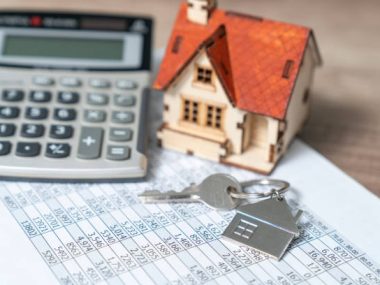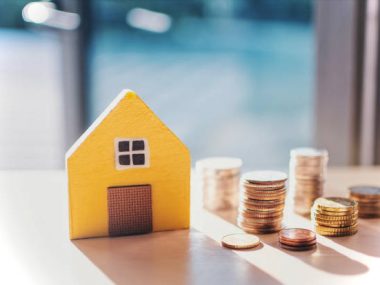Can you add renovation costs to conventional mortgage? When it comes to financing home renovations, homeowners often explore various options to cover the costs.
One option that many consider is adding renovation expenses to their conventional mortgage.
A conventional mortgage is a popular type of home loan that is not backed or insured by a government entity like the Federal Housing Administration (FHA) or the Department of Veterans Affairs (VA).
It is typically obtained through a private lender, such as a bank or mortgage company.
The prospect of including renovation costs in a conventional mortgage can be appealing, as it allows homeowners to finance both the purchase of a home and the necessary renovations in a single loan.
However, it is essential to understand the intricacies and limitations associated with this financing approach.
In this guide, we will delve into the subject of adding renovation costs to a conventional mortgage.
Also Read:
Does a Reverse Mortgage Go Through Probate?
How to Increase Mortgage Preapproval Amount
What is a Conventional Mortgage?
A conventional mortgage is a type of home loan that is not insured or guaranteed by a government agency such as the Federal Housing Administration (FHA) or the Department of Veterans Affairs (VA).
Instead, conventional mortgages are obtained through private lenders such as banks, credit unions, or mortgage companies.
One of the key characteristics of a conventional mortgage is that it adheres to the guidelines set by two major enterprises in the mortgage industry: Fannie Mae and Freddie Mac.
These entities establish the standards and criteria that lenders follow when underwriting and originating conventional mortgage loans.
Compared to government-backed mortgages, conventional mortgages often require higher down payments and have stricter credit and income requirements.
The borrower’s creditworthiness, income stability, and debt-to-income ratio are typically considered during the approval process.
Conventional mortgages offer a variety of loan terms and interest rate options, including fixed-rate and adjustable-rate mortgages.
They are popular among homebuyers who have a good credit history, stable income, and the ability to provide a larger down payment.
By not relying on government backing, conventional mortgages give lenders more flexibility in setting their own terms and conditions.
This flexibility can be advantageous for borrowers who meet the necessary qualifications and seek competitive interest rates and loan terms tailored to their specific needs.
Can You Add Renovation Costs to Conventional Mortgage?
Adding renovation costs to a conventional mortgage is a possibility that many homeowners consider when planning to purchase a home that requires renovations or when they want to make substantial improvements to their current property.
A conventional mortgage, which is not backed by a government entity, offers the advantage of competitive interest rates and flexible terms.
By including renovation expenses in the mortgage, homeowners can simplify their financing by consolidating both the purchase price and renovation costs into a single loan.
However, there are limitations to adding renovation costs to a conventional mortgage. Lenders typically have strict guidelines regarding the maximum loan-to-value (LTV) ratio and the types of renovations that are eligible for financing.
The LTV ratio is the percentage of the home’s appraised value that can be borrowed, and lenders often set a limit to mitigate risk.
To include renovation costs in a conventional mortgage, homeowners must provide detailed plans, cost estimates, and often work with approved contractors.
The lender will assess the feasibility and value that the renovations will add to the property.
Additionally, homeowners will need to meet the lender’s credit and income requirements to qualify for the increased loan amount.
Alternatively, homeowners may explore renovation loans such as the FHA 203(k) or Fannie Mae HomeStyle loans.
These loans are specifically designed to finance home renovations and offer more flexibility in terms of eligible renovations and borrowing limits.
Another option is to consider a home equity loan or a HELOC, which allow homeowners to tap into their home’s equity to fund renovation projects.
Overall, while it is possible to add renovation costs to a conventional mortgage, it is crucial for homeowners to understand the limitations, requirements, and alternatives available.
Consulting with lenders and exploring different financing options will help homeowners make informed decisions about the most suitable approach to finance their renovation projects.
Benefits and Drawbacks of Adding Renovation Costs to a Conventional Mortgage
Adding renovation costs to a conventional mortgage can offer several benefits.
Firstly, it allows homeowners to finance their home purchase and renovation expenses in a single loan, simplifying the financing process.
This can be particularly convenient for those who prefer the convenience of a single monthly payment.
Secondly, conventional mortgages often have lower interest rates compared to alternative financing options, potentially resulting in long-term savings.
Additionally, by financing renovations through a conventional mortgage, homeowners may increase the value of their property, potentially leading to a higher return on investment in the future.
However, there are also drawbacks to consider.
One significant drawback is that adding renovation costs to a conventional mortgage increases the overall loan amount, which can result in a higher monthly mortgage payment.
Homeowners should carefully assess their financial situation to ensure they can comfortably afford the increased payments.
Moreover, lenders may have strict requirements and guidelines regarding eligible renovations, and borrowers will need to provide detailed plans and cost estimates for approval.
Lastly, it’s important to consider the potential impact on the loan-to-value (LTV) ratio, as exceeding the LTV limit set by lenders may lead to additional costs such as private mortgage insurance (PMI).
Ultimately, homeowners should weigh the benefits and drawbacks and consider their financial capabilities and goals before deciding whether adding renovation costs to a conventional mortgage is the right choice for their specific circumstances.
Also Read:
Personal Care Assistant Day Shift
Information Technology College Intern Positions (Paid)
Conclusion
Adding renovation costs to a conventional mortgage is a possibility for homeowners seeking to finance both the purchase of a home and its renovations.
While it offers the convenience of a single loan and potentially lower interest rates, there are limitations and considerations to be aware of.
Lenders impose strict guidelines, including maximum loan-to-value ratios and eligibility criteria for renovations.
Homeowners should assess their financial capabilities and explore alternative financing options like renovation loans or home equity loans.
By carefully evaluating the benefits, drawbacks, and available alternatives, homeowners can make an informed decision on whether adding renovation costs to a conventional mortgage aligns with their specific needs and goals.






